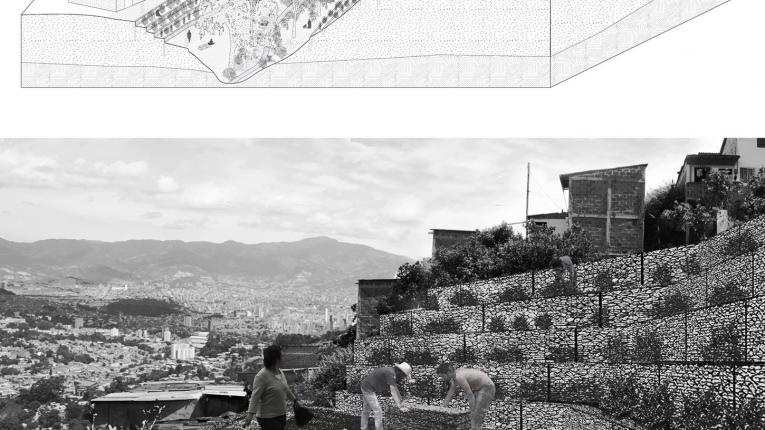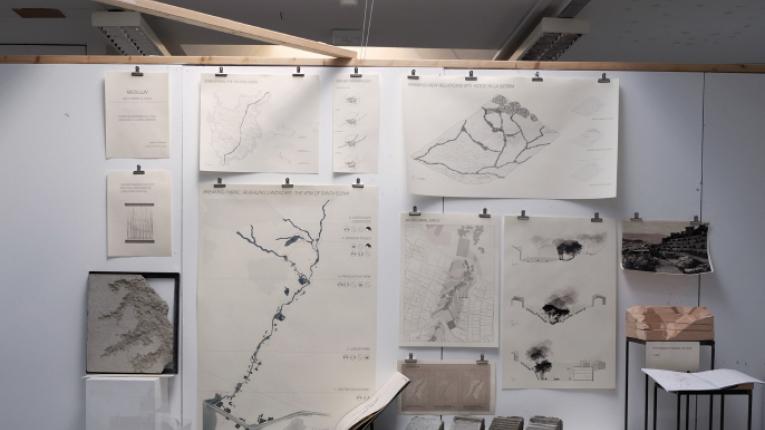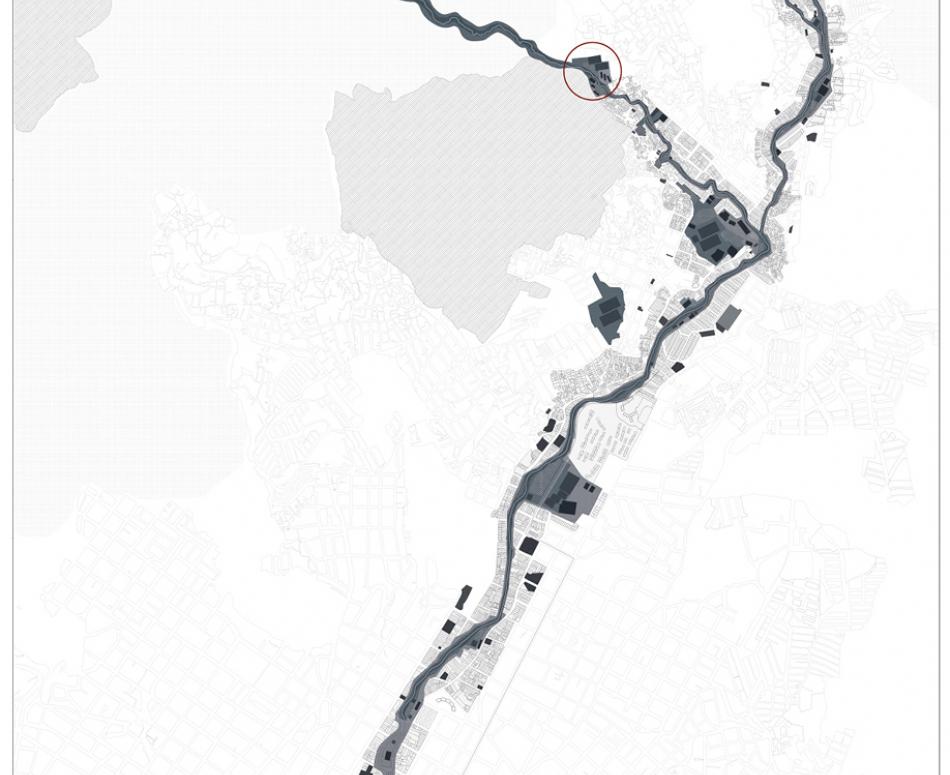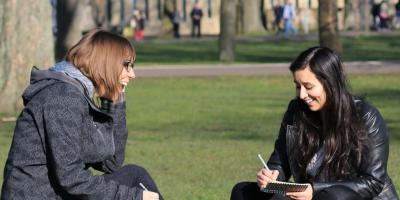How could landscape architecture make informal settlements more resilient against the impacts of climate change, as well as encourage economic growth in these areas? That’s the question Ignacio Gubianas aims to answer in his final project. He has developed the concept of “landscape veins” that connect a city centre with different regions in the outskirts and hinterlands beyond, where informal settlements (the formal name for a slum) are either being built or will be built in the near future.
The project is based in an informal settlement in Medellín in Colombia. Ignacio was able to visit the city and a settlement during his studies, where he met and spoke with residents about his work, using their knowledge to inform his research. “One of the issues is that these areas are really isolated and not really part of the city. The Global South is being urbanised at a really fast pace, and it’s expected that by 2035, the biggest cities in the world will be there,” says Ignacio, “If we don’t want the Global South to be a giant informal settlement we need to address this, and the time to address it is now because in ten years it will be too late.”
A challenge the settlements face is that they’re often built by people in areas that are prone to flooding, landslides and other natural disasters. “One of the things that happens right now is that the cities try to stop the informal settlements from growing. It doesn’t solve the issue, it just makes it worse,” he says, “What I’m arguing is that these armatures or veins should help to encourage the development and growth of the city into areas that are safer for people. The reality is that these communities are going to grow, whether people try to stop it or not, and so we should be making them as safe to live in as possible.”
One way that Ignacio’s project aims to make things safer is to improve drainage to avoid flooding. “What usually happens in Medellín is that all the streams that run through the city are engineered with concrete walls around them so whenever it rains for more than three days, it just overflows,” says Ignacio, “My proposal is to naturalize these streams as part of the design of the vein and that the water from the street drains naturally into the veins.”


As well as making people safer and encouraging economic growth, he hopes his design will change the perception of the settlements. “The way they are sometimes seen by governments is as parasites of the city, but I’m proposing a change of mindset and behaviour,” he says, “Most of the cities in these regions have been modelled on European and American cities, but they’re in a different context. They might have worked at the beginning, but they clearly don’t now. Informal settlements are a sort of vernacular way of building in the area because they use local materials and local knowledge.”
Ignacio will be graduating from the European Masters in Landscape Architecture (EMiLA) programme at Edinburgh College of Art, which allowed him to study two of his semesters abroad. He chose Amsterdam and Paris. “The three different universities had different ways of seeing the discipline and addressing design, and so that was really enlightening. In some ways I would not be doing the project I’m doing now, with the level of thinking and the level of design it’s had, if I hadn’t gone through that experience.”
He appreciates the support that tutors have given him during his studies. “In second year I was looking for an internship and I had great advice on the portfolio to help with that. They really care about us and they want us to do well and take advantage of every opportunity.”
“I’ve learned to reflect on and challenge things in everything I do, to try and be more critical, including of my own work,” he says, “In my time at ECA and the other universities, I’ve also been able to develop my more artistic and conceptual side. I hadn’t really explored that much before I came here, so it’s really allowed me to develop that side of my work.”
After graduating, Ignacio hopes to continue with the work he’s started in this project. “My plan would be to go back to South or Central America and work for a landscape office in Colombia, Chile or Mexico. I’d like to work there for a few years to get some experience and then maybe come back to Europe.”

